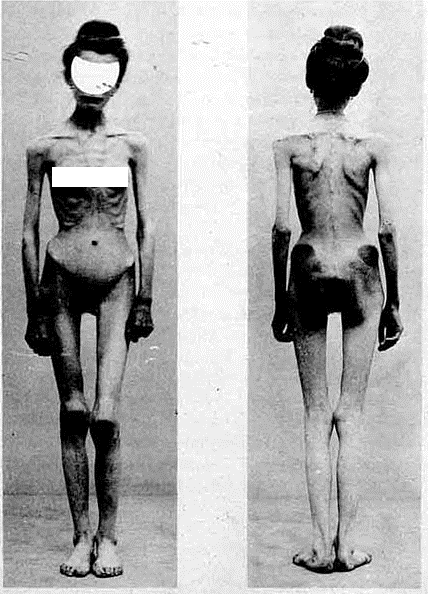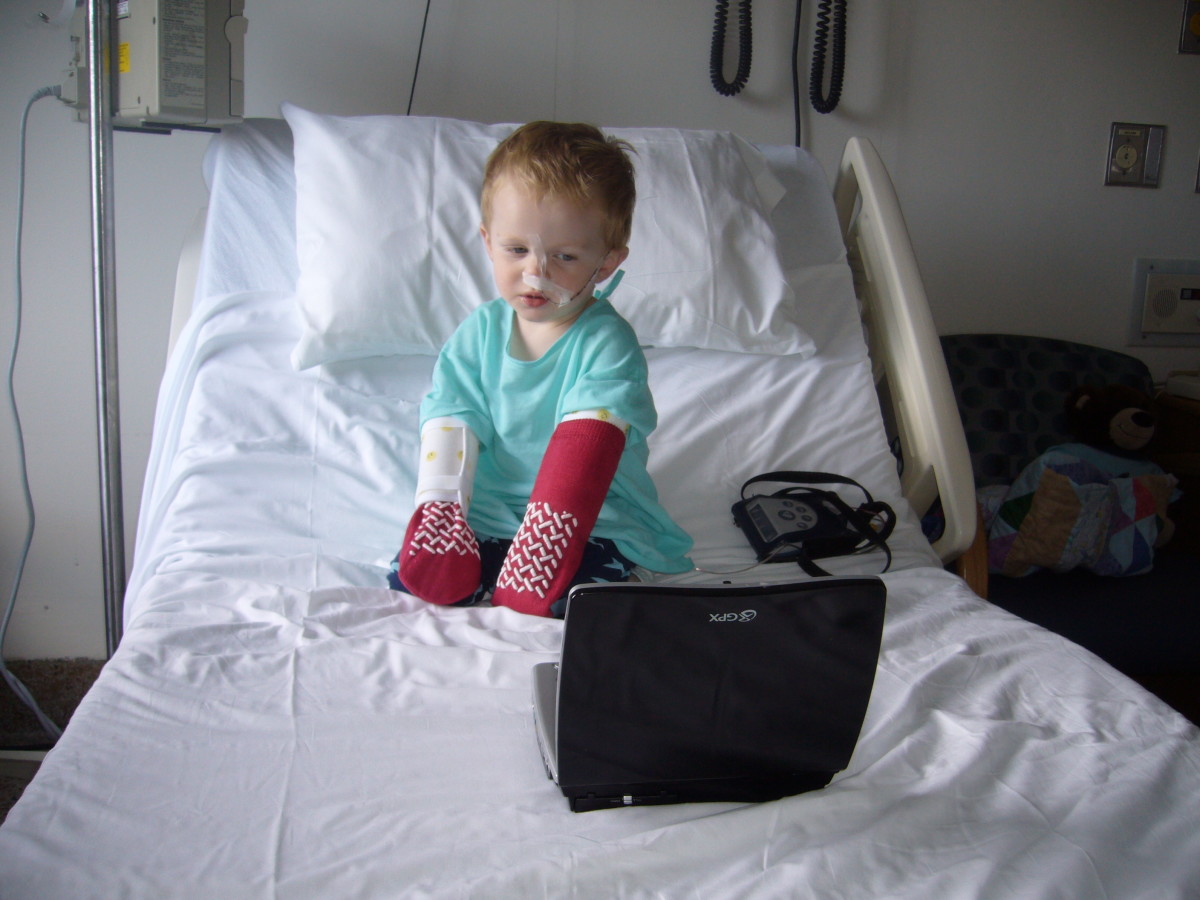How to Recognize an Eating Disorder

Illusion of Self: Losing Self
Eating disorders affect as many as 1 in every 10 young women today. While they also affect boys, they are much more common in girls and the risk of developing an eating disorder increases as girls move into their teen years.
The two most common eating disorders are anorexia and bulimia. They are considered psychiatric disorders because they are characterized by severe preoccupations with food and body imagery. Children and adults will go to great lengths to hide an eating disorder from parents, family, friends and other important people in their lives.
When the association between a person and food becomes so labored that it interferes with normal daily activities and standard of life, it becomes a complex and potentially dangerous situation. Eating disorders are more than just the purposeful disconnection between a person and their caloric intake, they are about extreme emotions, personal pain and often depression.
Risk Factors
#1 Obsessively exercising
When a child, adolescent or adult suddenly begins an abnormal routine of exercise, you should take note and pay attention. Integrating normal amounts of exercise into your daily life are typical and healthy. Obsessive exercising can be a sign of an eating disorder and a body image problem.
#2 The need to be in control
Suffering from an eating disorder is often about the ability to be in control. Eating disorders are not exclusive to one age group, lifestyle or ethnicity. It's not uncommon for patients who have undergone bariatric surgery to develop an eating disorder because of their tremendous desire to fit into an image they have predisposed.
When a person lives in an atmosphere where they have little or no control over their lives, the splintering effect can be an eating disorder.

#3 Preoccupation and distortion of body imagery
People who suffer with eating disorders are often incapable of viewing themselves as normal, attractive, happy or having any worth at all. There is a common misconception that success = popularity and in the United States, the trend in media is to sensationalize "skinny." Runway models are't curvy and normal, they are hyper-thin. Women in music videos are tiny and models in popular clothing ads look fragile and bony. When a child is watching their favorite Disney show and the star of the show looks emaciated, she will want to emulate that beautiful and vivacious character.
#4 Severe dieting
Severe dieting is when a child's normal eating habits change drastically. It's not the same as going through a growth spurt, not being hungry now and then or missing an occasional meal. Severe dieting can be recognized by hunger pains, headaches, dizziness, lethargy, weakness, constipation, dehydration and even death. When you starve your body, it involuntarily goes into starvation mode and begins to eat your muscles for energy. That's one reason emaciation happens. Over time, your organs will begin to fail because they don't have the necessary ingredients to work properly. As multiple organs begin to fail, the chance of survival is diminished.

#5 Intense fear of gaining weight
People with eating disorders often have an overwhelming fear of gaining weight. It's common for a person with an eating disorder to:
- Weigh themselves constantly
- Refrain from eating in public
- Refuse to eat with anyone present
- Eat only "safe" foods
- Cook for others but refusing to eat
- Disappear during or after meals - going to the restroom to purge the meal
- Use laxatives
- Appear swollen in the face
- Ingest large quantities of sweets, candy or treats
- Hoard food
- Possess other addictions such as alcohol or drugs
The anxiety presented with gaining weight can be so distressing that it's impossible not to interrupt the normal daily pattern. It's important to note that eating disorders gain steam over time and will eventually either require counseling, treatment or though less likely, they can self adjust. Once a person has arrived at the point where the disorder becomes a pathological behavior and thought process, it is medically recommended that they seek appropriate treatment, counseling and aftercare.
Although many people argue that eating disorders are not serious, people with eating disorders do not choose to take on the psychosis. Eating disorders should be considered with absolute resolution. While some cases are more serious than others, eating disorders can and do lead to death. If you are concerned that you or someone you love might be suffering with an eating disorder, see your doctor immediately.
Eating Disorder Facts
- Women are three times more likely to develop an eating disorder than men. The National Institute of Mental Health: “Eating Disorders: Facts About Eating Disorders and the Search for Solutions.” Pub No. 01-4901. Accessed Feb. 2002. http://www.nimh.nih.gov/publicat/nedspdisorder.cfm.
- Nearly 10% of all women who diet will progress to a pathological stage of dieting. Shisslak, C.M., Crago, M., & Estes, L.S. (1995). The Spectrum of Eating Disturbances. International Journal of Eating Disorders, 18 (3): 209-219.
- 70% of adolescent girls stated that their desire to diet came from their belief in the ideal "body image". Prevention of Eating Problems with Elementary Children, Michael Levine, USA Today, July 1998.
- More than 80% of 4th graders admitted to being afraid of becoming "fat". (Mellin et al., 1991).
- 5.2% of people who suffer with an eating disorder eventually lose the battle and die. Crow, S.J., Peterson, C.B., Swanson, S.A., Raymond, N.C., Specker, S., Eckert, E.D., Mitchell, J.E. (2009) Increased mortality in bulimia nervosa and other eating disorders. American Journal of Psychiatry 166, 1342-1346.
- 1/3 of all eating disorder deaths are due to suicide. The Renfrew Center Foundation for Eating Disorders, “Eating Disorders 101 Guide: A Summary of Issues, Statistics and Resources,” published September 2002, revised October 2003, http://www.renfrew.org

Eating Disorders and Sports
Several years ago a vibrant young woman came into the gym wanting to do gymnastics. I tested her skill level and put her into the appropriate class. It was only a matter of a few months before she became the superstar of the group so, being the "good coach", I immediately asked her if she was interested in competitive gymnastics. It was a delight to hear that she was indeed interested.
She spent the next season training and competing. Since she had never worked out with the competitive team, I didn't suspect a problem at first. It wasn't until about 6-8 months into training when I realized that she hadn't just slimmed down, she had become a physically fit, training machine. I spoke with the other coach and he agreed that we should address the issue.
When we asked her about her conditioning, she did the most amazing verbal dance I've ever heard and tried to convince us that she was just doing some conditioning at home because she liked to win. How could I argue with that? That's a coach's dream athlete. A few months later she began to present even skinnier. We attempted to speak with her mom but at home she was eating and seemed to be appropriately involved. It seemed that we were attributing the exhaustion to school, homework, activities and gymnastics. I wasn't buying it.
When spring rolled around, after the gymnastics season was over, we host our yearly banquet. It's the time when we come together as an entire team, recognize each kiddo's accomplishments and the team's overall wins for the season. When we called her name to come to the stage she was no where to be found. When she finally appeared to a packed banquet hall, everyone staring, it seemed that her cover was blown and she was devastated.
It's been almost fifteen years that she has struggled with this disease. She's been hospitalized numerous times. She's gone for more than 30 days without eating, suffered through feeding tubes, painful treatments, discrimination, fear, loss and the inability to hold down a job because of her health. I'll never believe that this was the path she designated and hoped for nor could it be the direct result of being a competitive gymnast.











